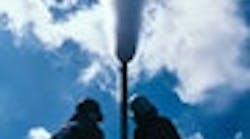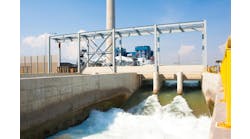For most process plants, steam systems are so vital they could be compared with the human body's blood circulating system. Hence, consider steam system losses just as life-threatening as a severe blood loss in our own bodies.
Maintaining an efficient and reliable steam system is very critical for the plant's process integrity and financial health. Recently, I came across a plant that survived market recessions successfully simply because it optimized its steam system costs when market conditions were good. In this two-part series, we will review four steps for steam system optimization.
Step 1: Review your steam generation systems. First, we have to ask ourselves, "Did we convert our purchased fuels into steam at the best possible efficiency?" Reviewing parameters for stack temperature and stack oxygen content could help identify deviations and the best possible efficiency levels. The parameters relevant to cost optimization include fuel costs and unutilized waste, such as heat steam generation.
[javascriptSnippet ]
At many sites I visit, one of the most common areas in need of steam system efficiency improvements is the steam generator or boiler. The two combustion optimization efforts -- excess air control and additional heat recovery that we discussed in our first two columns, Take a Fresh Look at Your Process Heaters -- Part I and II ( www.chemicalprocessing.com/articles/2011/take-fresh-look-process-heaters-part-2.html), are also applicable to the fired boilers.
Boilers offer additional opportunities for efficiency improvements. One is the blowdown control. Though well-established, automatic blowdown systems are still not available in many operating boilers. Depending upon the boiler's feed water quality, blowdown losses could change from insignificant to significant levels. Adding an automatic blowdown controller could easily reduce and maintain the blowdown losses, instead of depending on manual control only. Even with an automatic blowdown system in service, it is necessary to regularly monitor the feed water and drum water qualities to maintain the desired blowdown levels.
Another common efficiency improvement opportunity is the blowdown heat recovery. If there is no blowdown heat recovery system in place at your plant, consider adding one that would recover flash steam and sensible heat separately to conserve feed water and reduce waste water.
Step 2: Perform a critical evaluation of the steam distribution system. Steam distribution systems commonly suffer from both visible and invisible losses. Continuous flow of high-pressure steam to a lower pressure header through a pressure reducing valve (PRV) is one of the invisible losses. Supplying steam from higher-than-required pressure to a user is another kind of invisible loss.
The concept of cogeneration is to recover the mechanical energy in reducing the high-pressure steam into low-pressure steam and then utilize the latent heat for process heating. It may be worth running some pumps or blowers with steam, if there is a constant flow of high pressure steam through a PRV.
Space heating during winter months and most tank farm heating require only low-pressure steam. If you notice a high-pressure steam supply to such users at your site, reconsider supplying low-pressure steam to them.
Failed steam traps in closed condensate collection systems are another kind of invisible distribution system loss. Whenever there's excessive backpressure in the condensate return system or excessive venting at the collection tank, the most probable cause is typically failed steam traps. A systematic steam trap survey could identify the problem.
Leaks and missing insulation are some of the visible losses in a steam distribution system. Standardized methods already exist to fix these visible losses and so do not delay in taking these obvious actions.
Next month, in Part II, we will cover steps three and four.
Ven V. Venkatesan is Chemical Processing's Energy Columnist. You can e-mail him at [email protected].

